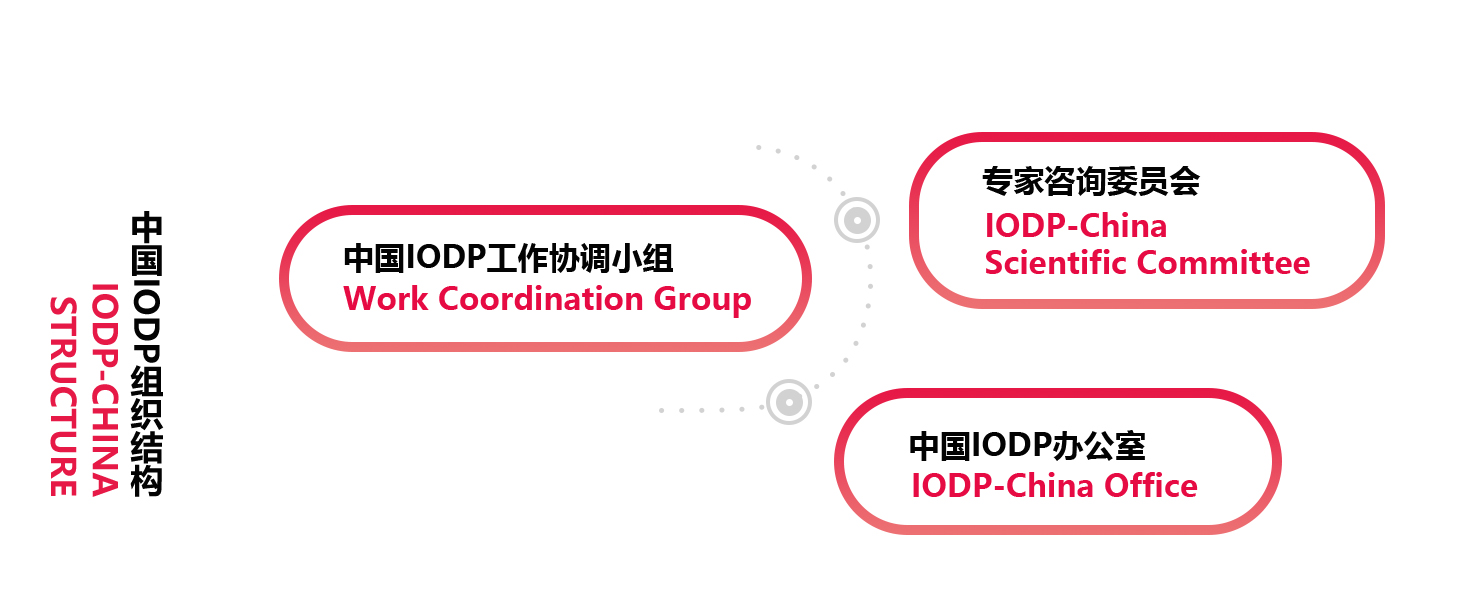
The International Ocean Discovery Program (IODP) and its predecessor programs (Integrated Ocean Drilling Program (IODP, 2003-2013), Ocean Drilling Program (ODP, 1985-2003) and Deep Sea Drilling Project (DSDP, 1968-1983)) are international marine research collaboration that explores the Earth's history and dynamics using ocean-going research platforms to recover data recorded in seafloor sediments and rocks and to monitor subseafloor environments. These programs represent the world's largest, longest-running, and most successful international Earth science collaboration. Over the past 50 years, the programs have been playing the most important role in the Earth science research and have revolutionized our view of Earth history and global processes through ocean basin exploration.
Currently, IODP depends on facilities on three platforms (JOIDES Resolution from United States, deep sea drilling vessel Chikyu from Japan, and Mission-Specific Platform from Europe) to implement expeditions. These facilities are funded by the US National Science Foundation (NSF), Japan's Ministry of Education, Culture, Sports, Science and Technology (MEXT), the European Consortium for Ocean Research Drilling (ECORD), China's Ministry of Science and Technology (MOST), Korea Institute of Geoscience and Mineral Resources (KIGAM), Australian-New Zealand IODP Consortium (ANZIC), and India's Ministry of Earth Science (MoES). Together, these entities represent twenty-two nations whose scientists are selected to staff IODP research expeditions conducted throughout the world's oceans. Scientist activities are managed by the IODP Program Member Offices.
China officially joined the ODP as its first associate member in 1998, with an annual contribution of U.S.$500 k. Soon after in May 1998, the ODP-China Scientific Committee was established. Since then, China started to send scientists to sail on ODP legs and to participate in the ODP panels. In 1999, Chinese scientists designed the ODP Leg 184 drilling in the South China Sea (SCS), marking the first ocean drilling expedition off the China's coast.
On 6 February 2004, the MOST established the IODP-China Scientific Committee, and the IODP-China Office. On 26 April 2004, China officially joined the IODP as an associate member with an annual contribution of U.S.$1 million. In return, Chinese scientists can sail on the IODP expeditions and access the samples and data of all expeditions.

In October 2013, China joined the IODP with an annual contribution of U.S.$3 million. In June 2014, the MOST established the new Chinese IODP structure, including the IODP-China Work Coordinating Group, the IODP-China Scientific Committee, and the IODP-China Office. Based on the success of IODP (2003-2013), the IODP Expedition 349 was led by Chinese scientists and implemented successfully in the SCS in 2014. Two more expeditions (IODP 367/368) drilled in the SCS took place in February-June 2017. Since 1998, more than 150 Chinese scientists have participated in over 60 IODP expeditions around the world, and over 1000 Chinese scientists have taken part in the post-cruise research.